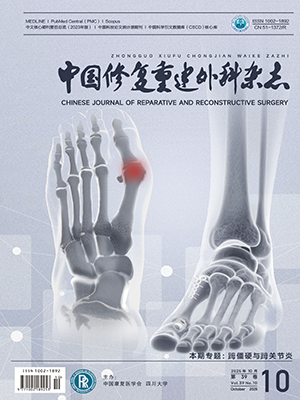Objective To compare the diagnostic accuracy of supraspinatus muscle outlet X-ray film, oblique sagittal multislice helical CT (MSCT), and oblique sagittal MRI in the diagnosis of subacromial impingement syndrome (SIS). Methods A retrospective analysis was conducted on the imaging data of 106 patients diagnosed with SIS between January 2023 and December 2024. The cohort consisted of 32 males and 74 females, with ages ranging from 43 to 70 years (mean, 60.19 years). All patients underwent supraspinatus muscle outlet X-ray film, MSCT, and MRI scans, with MSCT further subjected to three-dimensional reconstruction. Two experienced radiologists independently evaluated the acromion morphology in each imaging modality using the Bigliani classification system. Inter-observer reliability was assessed via Kappa statistics. The CT three-dimensional reconstructions were used as the “gold standard”. The overall consistency, Kappa values, sensitivity, and specificity of the three imaging modalities were calculated. Receiver operating characteristic (ROC) curves were plotted, and the area under the curve (AUC) was computed. Results The inter-observer reliability for supraspinatus muscle outlet X-ray film, oblique sagittal MSCT, and oblique sagittal MRI was moderate, with Kappa values of 0.62, 0.63, and 0.55, respectively. When compared to the CT three-dimensional reconstructions as the “gold standard”, the overall consistency was 88.7% (94/106), 62.3% (66/106), and 58.5% (62/106), respectively. The supraspinatus muscle outlet X-ray film showed excellent consistency (Kappa=0.77), whereas the consistency of MSCT and MRI was lower (Kappa=0.34 and 0.29, respectively). In terms of diagnostic sensitivity and specificity, the supraspinatus muscle outlet X-ray film outperformed oblique sagittal MSCT and oblique sagittal MRI in distinguishing various acromion types. ROC analysis demonstrated that the AUC for the supraspinatus muscle outlet X-ray film was consistently higher than for oblique sagittal MSCT and oblique sagittal MRI, with the highest diagnostic performance observed for type Ⅲ hooked acromion (AUC=0.939). Conclusion Supraspinatus muscle outlet X-ray film provides the highest diagnostic accuracy for acromion classification in SIS patients, particularly in identifying type Ⅲ hooked acromion, which is strongly associated with SIS. Given its superior sensitivity and consistency, it should be considered the primary screening tool. MSCT and MRI serve as valuable supplementary modalities for complex cases and preoperative evaluation.
Citation:
ZI Linfeng, JIN Hongfu, ZHU Jianwei, ZHANG Guoxu, TONG Yao, CHEN Sijie, SHAO Wenze, TANG Xin. Comparative study on accuracy of three imaging methods in diagnosis of subacromial impingement syndrome. Chinese Journal of Reparative and Reconstructive Surgery, 2025, 39(10): 1290-1295. doi: 10.7507/1002-1892.202505090
Copy
Copyright © the editorial department of Chinese Journal of Reparative and Reconstructive Surgery of West China Medical Publisher. All rights reserved




